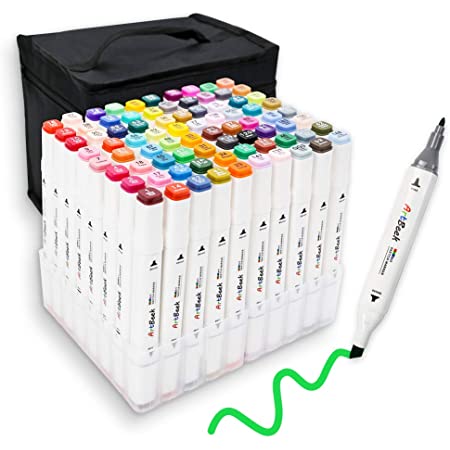5 easy ways to use markers for visual perception
If you have children in your family, you may have a bunch of markers. Kids love markers! Here are some ways to use markers to develop visual perception skills. Using common items such as ordinary old markers can easily and effortlessly solve the skills required for visual perception and handwriting.
Most parents know that solving the underlying vision problems behind literacy challenges can be very difficult in the presence of the cost of treatment or treatment tools. Using low-cost tools like regular marker pens can easily solve the cost of high-priced treatment tools. Similarly, for teachers or occupational therapists in schools, cheap treatment is also essential for common challenges.
Handwriting, reading, and almost every activity we do require visual perception skills in order to perform visual scanning, accurately locate basic information and pay attention to details such as lines on paper.
We used ArtBeek markers. This type is perfect because the entire mark is the color of ink. It allows children to match colors for some of the visual perception activities listed below. I like that these markers are used for large collections of visual perception activities because there are multiple markers in a single color or shade. For example, using several shades of red is a good way to solve visual discrimination and keep it constant.
Here is how to use markers to deal with perception skills:
1. Pour the entire marker pen into a small container like a pencil case. Ask your child to select a specific color or series of colors.
This can help children improve their basic skills in graphics. The intuitive graphical background allows us to extract important information from the chaotic background. This is an important handwriting skill when we intuitively extract written works from paragraphs when copying.
2. Arrange the marks side by side. Place some markers so that the caps point in one direction and most caps point in the other direction. When making visual distinctions, children can point or name colors that point in the wrong direction. Visual discrimination allows us to determine the subtle differences between things. When we notice "b" and "d" or "h" and "r", we need to make a visual distinction.
3. You will need several markers of the same color or shade for this activity. Remove the red cap from some markings. Put them back on the other markers and mix the lids. Put a few markers in the pencil box. Ask the child to look at the trash can and point to or pull out the "red" mark. Some markers are red at the bottom, while others are red. By performing this activity, children can maintain the stability of the form. They can solve the visual perception skills required for written work by better understanding that shapes and letters (regardless of their orientation or size) are the same.
4. Put some marker pens in the pencil case. Ask the child to look at the trash can in a short time. When they cover their eyes, ask them to look away. Then delete one or two markers. Ask them to look back at the trash can and make sure that the mark has been deleted.
This task solves visual memory.
Visual memory is a basic skill for copy work in handwriting tasks.
5. Place several marker pen covers on a table arranged side by side. Ask the child to remember the order of the marker pens, and then close the lid. They can then use the corresponding markers to draw the lines in the same way as the order in which the marker covers are located.
This activity is very suitable for solving visual sequential memory.
Visual sequential memory is a visual perception skill that is essential for writing words and letters from left to right without copying each letter every time.
Grab these markers so that you can do this handwriting activity at home, school or office!

